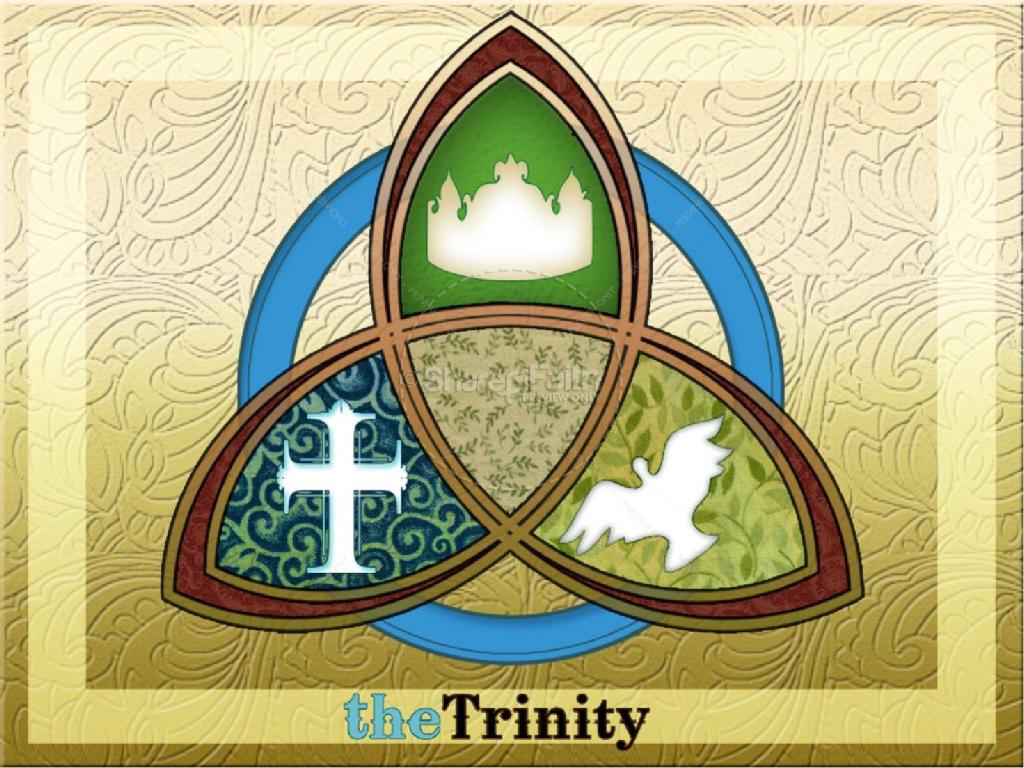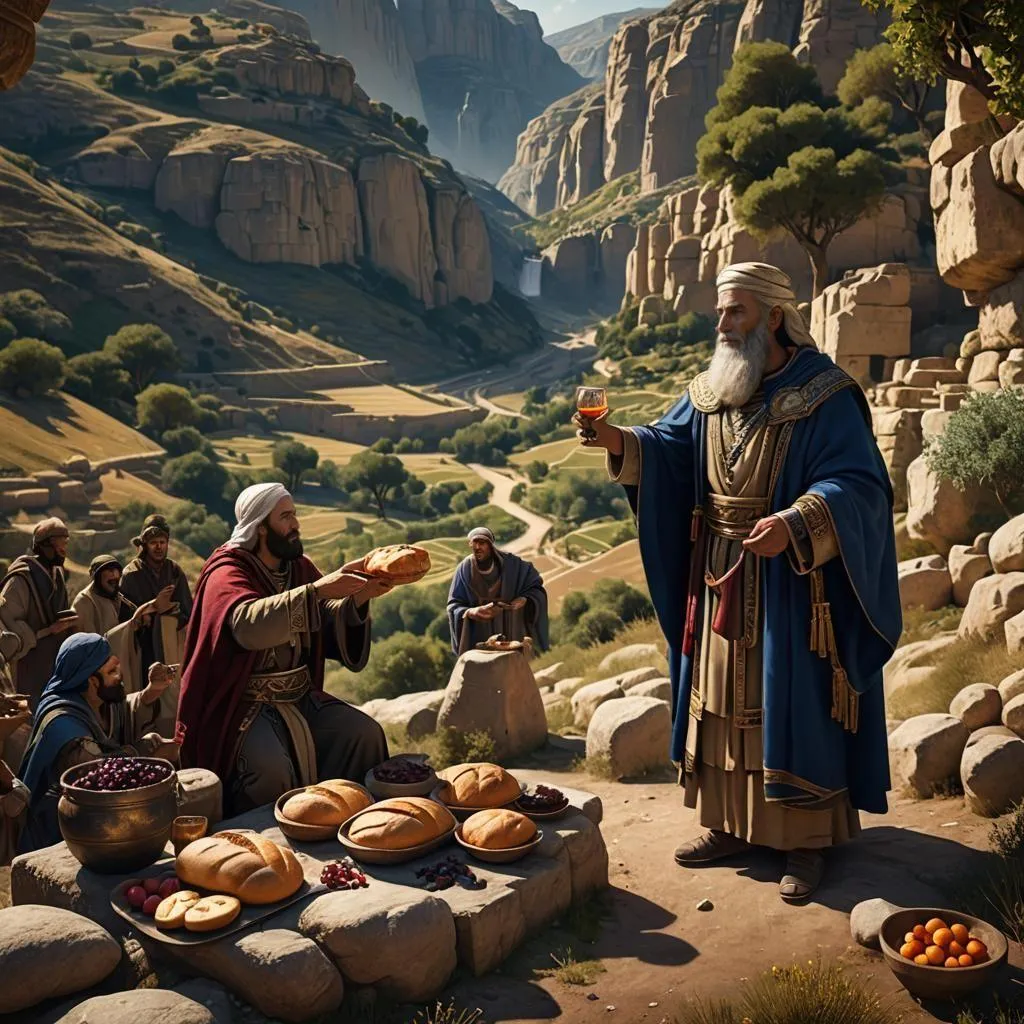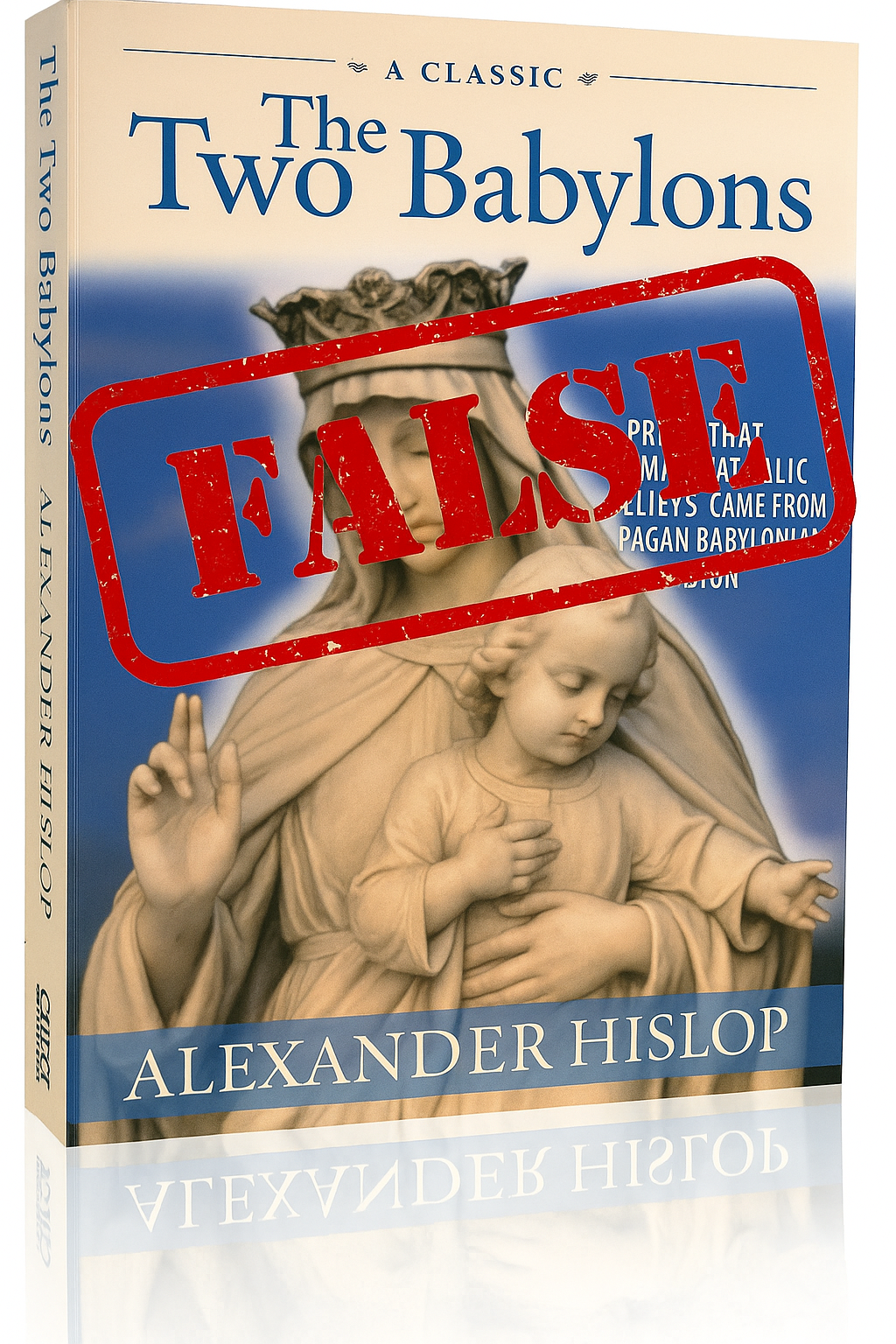The Coming of Jesus: Coming on the clouds

Series Index
- The Coming of Jesus: Introduction
- The Coming of Jesus: Daniel's 70 Weeks
- The Coming of Jesus: Coming on the clouds
- The Coming of Jesus: The Olivet Discourse – Part 1
- The Coming of Jesus: The Olivet Discourse – Part 2
- The Coming of Jesus: Revelation Fulfilled?
- The Coming of Jesus: Our Future Hope - What Now?
Coming on the clouds of heaven
Then the sign of the Son of Man will appear in heaven, and then all the tribes of the earth will mourn, and they will see ‘the Son of Man coming on the clouds of heaven’ with power and great glory.
When people read Jesus saying that he will be "coming on the clouds of heaven with power and great glory" in Matthew 24:30, it often taken to mean that he will be doing that literally as opposed to figuratively.

Careful now, before you put on your heretic hunting hats and grab your pitchforks — let me explain why I say that Jesus wasn't telling his followers he would be surfing across the sky on literal clouds.
As I pointed out in my last post, to truly understand Jesus, and indeed the New Testament, we need to better know the Old Testament texts. This phrase that Jesus used about "coming on the clouds" is a reference to a prophecy in the book of Daniel in which Daniel see's one who 'looks like a son of man' (ie. a person with a human form) 'coming with the clouds of heaven' which has all sorts of implications that we often miss by either not knowing much of the Old Testament, or because we're not Jewish with a better understanding of these prophecies. As a small note too, it's also these visions of Daniel that Revelation in the New Testament takes a lot of its imagery from and describes the same events – I will be touching on that more in the next part in this series.
Often times, our thoughts on these phrases or this kind of prophetic language, is coloured by our upbringing or teaching from a church, or even by secular culture which has taken this imagery and "hollywoodized" it. You need only Google for "apocalypse" or "armageddon" to see this; and although it can be fun from a film watching perspective, it's not entirely helpful if we are letting modern-day secular films and interpretation influence our reading and understanding of Scripture.
Lets begin by looking at what Daniel saw. A little context first: the setting is Daniel in the throneroom of God, watching as the "court sat in judgment, and the books were opened" to begin a judgement process.
Daniel 7:13-14
As I watched in the night visions,
I saw one like a human being
coming with the clouds of heaven.
And he came to the Ancient One
and was presented before him.
To him was given dominion
and glory and kingship,
that all peoples, nations, and languages
should serve him.
His dominion is an everlasting dominion
that shall not pass away,
and his kingship is one
that shall never be destroyed.
That line which says "like a human being" is translated in some Bibles as "like a son of man" which makes Jesus's reference a little clearer when comparing the texts, though the meaning is the same.
So what's happening in Daniel's vision, and why is Jesus talking about it?
First of all, Jesus isn't just making a reference to this vision of Daniel by talking about clouds. Jesus repeatedly calls himself the "Son of Man" throughout his ministry, which is a veiled reference to what Daniel saw. When the Pharisees were questioning Jesus during his arrest, they asked him bluntly if he was the Messiah (Matt 26:63-65), and how did Jesus answer? By making a reference to Daniel 7:
Jesus said to him, “You have said so. But I tell you,
From now on you will see the Son of Man
seated at the right hand of Power
and coming on the clouds of heaven.”
The reaction of High Priest says it all: Then the high priest tore his clothes and said, “He has blasphemed!” This was more than just an idle phrase, this was Jesus making himself equal to God and the Jewish leaders understood this which is why they got so angry. The disciples/apostles understood this about Jesus also, which is what they preached and wrote about and also why they worshipped him (cf. Ps 110:1, Jn 5:18; Matt 26:64, Acts 2:33, Acts 5:31, Rom 8:34, Col 3:1, Heb 1:3, Heb 12:2).

But what's all this got to do with Jesus coming on the clouds? If Jesus is making a reference to a vision in Daniel, which describes something that happens in a purely spiritual realm, then why all of a sudden, does it become a literal, physical event when it concerns Jesus? Daniel's vision is about the Son of Man coming before the "Ancient One" (ie. God the Father) and being presented with a kingdom, power and authority that will never end – which is exactly what Jesus was preaching about when he said the Kingdom of God/Heaven had arrived with his first coming, even though it was not how the Jewish leaders and people had expected it. It is a spiritual and mystical Kingdom that dwells within us, and is evidenced by our lifestyles being that of those who live under a godly reign in this physical world (Lk 17:20-21; Jn 18:36).
So when Jesus says that he is coming again, and doing so "on the clouds," we must remember that this is a reference to a prophecy set within a context of God doing some judging (Dan 7:10). This language isn't unique to Daniel either, but is a typical example of apocalyptic imagery used by prophets.
*A small note to help clarify some terms here: "apocalypse" is a Greek word which simply means "revealed" or "revelation" - as in, being shown something by divine beings/intervention that was once hidden, and is also a genre of writing in Judaism and Christianity encapsulating prophetic texts of this nature. Likewise, "Armageddon" is a Hebrew word which is the name of a place in Israel. Only in modern culture have these words taken on the meaning "end of the world."
With that in mind, let's look at the other references to God coming on the clouds through the Old Testament, and what it means. I'll add some emphasis to some of the verses just so you can see what I'm pointing out.
Isaiah 19:1-2
An oracle concerning Egypt.
See, the Lord is riding on a swift cloud
and comes to Egypt;
the idols of Egypt will tremble at his presence,
and the heart of the Egyptians will melt within them.
I will stir up Egyptians against Egyptians,
and they will fight, one against the other,
neighbor against neighbor,
city against city, kingdom against kingdom;Nahum 1:5
The mountains quake before him,
and the hills melt;
the earth heaves before him,
the world and all who live in it.Isaiah 34:4
All the host of heaven shall rot away,
and the skies roll up like a scroll.
All their host shall wither
like a leaf withering on a vine,
or fruit withering on a fig tree.Ezekiel 20:35
and I will bring you into the wilderness of the peoples, and there I will enter into judgment with you face to face.
Plus also see: 2 Sam 22:8-16; Isaiah 19:1; Ezekiel 30:3; Ezekiel 30:18; Ezekiel 32:7; Ezekiel 34:12; Joel 2:1-2 to name a few more!
Notice a theme going on here?
This brings us right back to the disciples asking "what will be the sign of your coming and of the end of the age" and Jesus saying that he would "come on the clouds with power and great glory." The first thing to take note of here is that the disciples as about the end of the age, although some Bible mistranslate this as "end of the world," which is incorrect since if you check out the underlying Greek text, it uses the word aion (we would understand as "eon" or "age" in English) and not the word for "world" (Gk. kosmos).
Jesus also says that "the sun will be darkened, and the moon will not give its light; the stars will fall from heaven, and the powers of heaven will be shaken" which sounds pretty cataclysmic on the face of it, until you realise that this yet another reference to an Old Testament prophecy, this time from Isaiah, and possibly also Ezekiel as they use the same kind of language. I'll quote the relevant Isaiah passage, but you can read the other references here: Isa 34:4-5; Ezek 32:7-8.
Isaiah 13:1,10
The oracle concerning Babylon that Isaiah son of Amoz saw ...
For the stars of the heavens and their constellations
will not give their light;
the sun will be dark at its rising,
and the moon will not shed its light.
Note that the theme here continues – it is all concerning God visiting a nation with judgement. These nations and cities were destroyed by armies that God used as his weapon of choice, as it were. None of it was a literal event that saw God flying across the sky on clouds, or the stars actually falling out of the sky and going dark! This is all figurative language for a dramatic and drastic change in the world; the heavenly bodies, such as stars and moons etc. are often references to earthly kings and nations, political powers and systems, and their power on or over the Earth.
These are the things that God was going to shake up, blot out and cause to fall: earthly kingdoms, powers and systems. Which is exactly what Jesus was prophesying about in Matthew 24 — the destruction of the Temple and the end of the Old Covenant age, which will usher in the New Covenant in its fullness along with a new age of Grace through and by the life, death, resurrection and forgiveness of Christ!
Jesus's coming which he spoke of here was never to do with a physical return, but was always a prophetic reference to him visiting Jerusalem in judgement, just like God had done in previous generations, when he spoke to the people through prophets using this type of figurative language.
When we can clearly see that all of these visitations by God in the Old Testament, using the same phrases and language that Jesus used, were prophetic and symbolic references to God using armies and other nations to bring war and destruction on something as judgement against them as though God himself had done it, why then do we suddenly expect the complete opposite to happen when Jesus comes?
Now, people will still cling to a physical and literal interpretation of this and use other New Testament quotes to back up that view, such as 2 Peter 3:4,9 which says:
...saying, “Where is the promise of his coming? [...] The Lord is not slow about his promise, as some think of slowness, but is patient with you, not wanting any to perish, but all to come to repentance.
Though the dating and authorship of 2 Peter is doubted in academic circles, if we assume that Peter did write this letter, and did so before his death, then it had to be written before 70 AD which is when the Jewish War was happening and the Temple destroyed. Which is what Jesus used as the focal point in his reference to his 'coming'.
You can't use a quote written prior to 70AD to proof text Jesus not coming yet, though that is what often happens. It's like someone in 1938 quoting H.G. Wells saying in 1914 that WWI will be the "war to end all wars" when history quite clearly shows the opposite.
So to conclude, there's nothing in what Jesus says to suggest anything other than a reference to judgement by God on Jerusalem and the Jewish nation, using the symbolic language of the prophets to make his point, that what was to comes was going to be God's judgement on them!
In the next part of the series I will be taking a closer look at Matthew 24 (and the parallels in the other Gospels) alongside Revelation and seeing how, and if, history shows us that what Jesus prophesied as the signs of his coming were fulfilled.
If you enjoyed this, leave a comment below.
Further Reading:
- http://www.gotquestions.org/biblical-symbolism.html
- http://www.ligonier.org/blog/some-standing-here-will-not-taste-death-unfolding-biblical-eschatology/
- http://livingthequestion.org/coming-of-god/
Leave a comment Like Back to Top Seen 7.8K times Liked 9 times
Enjoying this content?
Support my work by becoming a patron on Patreon!
By joining, you help fund the time, research, and effort that goes into creating this content — and you’ll also get access to exclusive perks and updates.
Even a small amount per month makes a real difference. Thank you for your support!
Subscribe to Updates
If you enjoyed this, why not subscribe to free email updates and join over 853 subscribers today!
My new book is out now! Order today wherever you get books
Recent Posts
Luke J. Wilson | 7 days ago | Islam
You are not alone. Around the world, many Muslims — people who already believe in one God, pray, and seek to live righteously — are drawn to know more about Jesus (ʿĪsā in Arabic). Some have heard He is more than a prophet. Some have sensed His presence in a dream or vision. And some simply long to know God more deeply, personally, and truly. So what does it mean to become a Christian? And how can you take that step? This guide is for you. 1. What Christians Believe About God and Jesus ➤ One God, Eternal and Good Christians believe in one God — the same Creator known to Abraham, Moses, and the prophets. But we also believe God is more personal and relational than many realise. In His love, He has revealed Himself as Father, Son (Jesus), and Holy Spirit — not three gods, but one God in three persons. ➤ Jesus Is More Than a Prophet Muslims honour Jesus as a great prophet, born of the virgin Mary. Christians also affirm this — but go further. The Bible teaches that Jesus is the Word of God (Kalimat Allāh), who became flesh to live among us. He performed miracles, healed the sick, raised the dead — and lived without sin.Jesus came not just to teach but to save — to bring us back to God by bearing our sins and rising again in victory over death. 2. Why Do We Need Saving? ➤ The Problem: Sin All people — no matter their religion — struggle with sin. We lie, get angry, feel jealous, act selfishly, or fail to love God fully. The Bible says: “All have sinned and fall short of the glory of God.” (Romans 3:23) Sin separates us from God. And no matter how many good deeds we do, we can never make ourselves perfect or holy before Him. ➤ The Solution: Jesus Because God loves us, He did not leave us in our sin. He sent Jesus, His eternal Word, to live as one of us. Jesus died willingly, offering His life as a sacrifice for our sins, then rose again on the third day. “But God proves his love for us in that while we still were sinners Christ died for us.” (Romans 5:8) 3. How Do I Become a Christian? Becoming a Christian is not about joining a Western religion. It’s about entering a relationship with God through faith in Jesus Christ. Here is what the Bible says: ✝️ 1. Believe in Jesus Believe that Jesus is the Son of God, that He died for your sins, and that He rose again. “If you confess with your lips that Jesus is Lord and believe in your heart that God raised him from the dead, you will be saved.” (Romans 10:9) 💔 2. Repent of Your Sins Turn away from sin and ask God to forgive you. This is called repentance. It means being truly sorry and choosing a new way. “Repent therefore, and turn to God so that your sins may be wiped out.” (Acts 3:19) 💧 3. Be Baptised Jesus commands His followers to be baptised in water as a sign of their new life. Baptism represents washing away your old life and rising into a new one with Jesus. “Repent and be baptised every one of you in the name of Jesus Christ so that your sins may be forgiven.” (Acts 2:38) 🕊️ 4. Receive the Holy Spirit When you believe in Jesus, God gives you the Holy Spirit to live within you, guiding you, comforting you, and helping you follow His will. “You received the Spirit of adoption, by whom we cry, ‘Abba! Father!’” (Romans 8:15) 🧎 5. Begin a New Life As a Christian, you are born again — spiritually renewed. You begin to grow in faith, love, and holiness. You read the Bible, pray, fast, and gather with other believers. Your life is no longer your own; you now live for God. 4. What Does a Christian Life Look Like? Jesus said: “If anyone wants to become my followers, let them deny themselves and take up their cross and follow me.” (Matthew 16:24) This means: Loving God with all your heart Loving your neighbour — even your enemies Forgiving others ...
Luke J. Wilson | 05th May 2025 | Politics
When we think about David and Saul, we often focus on David’s rise to kingship or his battle with Goliath. But hidden within that story is a deep lesson for today’s generation about leadership, resistance, and the power of revolutionary love. At a recent youth training event (thanks to South West Youth Ministries), I was asked how I would present the story of David and Saul to a Christian teenage youth group. My mind turned to the politics of their relationship, and how David accepted Saul’s leadership, even when Saul had gone badly astray. David recognised that Saul was still God’s anointed king — placed there by God Himself — and that it was not David’s place to violently remove him. Gen-Z are more politically aware and engaged than previous generations, and are growing up in a world where politics, leadership, and social issues seem impossible to escape. We live in a world where political leaders — whether Trump, Putin, Starmer, or others — are often seen as examples of failed leadership. It’s easy to slip into bitterness, cynicism, or violent rhetoric. These kids are immersed in a culture of activism and outrage. As Christians, we’re called to care deeply about truth and justice and approach leadership differently from the world around us (Hosea 6:6; Isaiah 1:17; Micah 6:8). The story of David and Saul offers pertinent lessons for our modern lives. Respect Without Endorsement David’s respect for Saul was not blind loyalty. He did not agree with Saul’s actions, nor did he ignore Saul’s evil. David fled from Saul’s violence; he challenged Saul’s paranoia; he even cut the corner of Saul’s robe to prove he had the chance to kill him but chose not to. Yet throughout, David refused to take matters into his own hands by force. Why? Because David understood that even flawed authority ultimately rested in God’s hands, he trusted that God would remove Saul at the right time. This is echoed later in the New Testament when Paul writes in Romans 13 that “there is no authority except from God, and those authorities that exist have been instituted by God”, something even Jesus reminded Pilate of during his trial (John 19:10–11). In other words, even flawed leadership can be part of God’s bigger plan, whether for blessing or discipline. Even when leaders go bad, our call as believers is to maintain integrity, respect the position, and resist evil through righteousness — not rebellion. David and Saul: A Lesson in Respect and Restraint Saul was Israel’s first king — anointed by God but later corrupted by pride, fear, and violence. David, chosen to succeed him, spent years running for his life from Saul’s jealous rage. One day, David found Saul alone and vulnerable in a cave. His men urged him to strike Saul down and end the conflict. But David refused: “I will not raise my hand against my lord; for he is the Lord’s anointed.” (1 Samuel 24:10) Instead of killing Saul, David cut off a piece of his robe to prove he could have harmed him, but didn’t. In doing so, he demonstrated a real form of nonviolent resistance. He stood firm against Saul’s injustice without resorting to injustice himself, and acted in a way that could try to humble Saul instead. Peacemaking Is Not Passivity There is a modern misconception that peacemaking means doing nothing and just letting injustice roll all over us. But true biblical peacemaking is not passive; it actively resists evil without becoming evil. Interestingly, David’s actions toward Saul also foreshadow the type of nonviolent resistance Jesus later taught. When Jesus commanded His followers to turn the other cheek, go the extra mile, and love their enemies, he was not calling for passive submission but offering what scholar Walter Wink describes as a “third way” — a bold, peaceful form of resistance that uses what he calls “moral jiu-jitsu” to expose injustice without resorting to violenc...
Luke J. Wilson | 21st April 2025 | Easter
Over the years, I’ve encountered many Christians who’ve quoted from Alexander Hislop’s The Two Babylons as if it were a solid historical resource. The book claims that the Roman Catholic Church is not truly Christian but rather a continuation of ancient Babylonian religion. It’s self-assured and sweeping, and for many people, it seems to explain everything, from Marian devotion to Lent and Easter, to Christmas, as rooted in paganism. But is it accurate? In short: no, it really isn’t. Hislop’s work is a classic example of 19th-century pseudohistory — a polemical piece, written to prove a point, not to explore any historical truth. Flawed Methods and Wild Claims Hislop argues that most Catholic practices — from the Mass and clerical robes to festivals like Christmas and Easter — were somehow borrowed from Babylonian religion. The problem being that Hislop doesn’t rely on primary sources or credible historical data. Instead, he draws connections based on word similarities (like Easter and Ishtar) or visual resemblances (like Mary and child compared with mother-goddess statues from ancient cultures). But phonetic resemblance isn’t evidence, and neither is visual similarity. For example, if I say “sun” and “son” in English, they may sound alike, but they aren’t the same thing. That’s the level of reasoning at work in much of The Two Babylons. Hislop often lumps together completely different ancient figures — Isis, Semiramis, Ishtar, Aphrodite — as if they were all just variations of the same deity. He then tries to say Mary is just the Christian version of this pagan goddess figure. But there’s no credible evidence for that at all. Mary is understood through the lens of Scripture and Christian theology, not through pagan myth. The earliest depictions of Mary and the Christ-child date back to the second century and do not resemble any of the pagan idols. But, again, the common accusations are based on superficial similarities of a woman nursing a child. That’s going to look the same no matter who or what does that! Oldest depiction of Mary. Dura-Europos Church, Syria, 2nd century What About Lent and Tammuz? One of Hislop’s more popular claims is that Lent comes from a Babylonian mourning ritual for the god Tammuz, mentioned in Ezekiel 8:14. He argues that early Christians borrowed the 40-day mourning period and just rebranded it. But this doesn’t line up with the evidence. Lent developed as a time of fasting and repentance leading up to Easter — especially for new believers preparing for baptism. The number forty comes from Scripture: Jesus’ forty days in the wilderness, Moses’ fast on Sinai, and Elijah’s journey to Horeb. Church Fathers like Irenaeus and Athanasius saw it as a time for self-denial and spiritual renewal — not mourning a pagan god. Yes, there are pagan festivals that involve seasonal death and rebirth stories. But similarity does not mean origin. If that logic held, then even Jesus’ resurrection would be suspect because pagan cultures also told resurrection-like stories. Yet the gospel stands apart — not because of myth but because of history and revelation. Why Hislop’s Work Persists Even though The Two Babylons is poor scholarship, it’s unfortunately had a long shelf life. That’s partly because it appeals to a certain kind of suspicion. If you’re already sceptical about the Catholic Church, Hislop offers an easy explanation: “It’s all pagan!”. But history isn’t ever that simple. And theology — especially the theology handed down through the ages by the faithful— isn’t built on conspiracy and apparent obscure connections, but on Christ and the truth of the Scriptures. Interestingly, even Ralph Woodrow, a minister who once wrote a book defending Hislop’s ideas, later retracted his views after digging deeper into the evidence. He eventually wrote a book called The Babylon Connect...
Darwin to Jesus | 16th April 2025 | Atheism
Guest post by Darwin to Jesus Dostoevsky famously said, “If there is no God, then everything is permitted.” For years, as an atheist, I couldn’t understand what he meant, but now I do… Here’s a simple analogy that shows why only theism can make sense of morality: Imagine you just got hired at a company. You show up, set up your desk, and decide to use two large monitors. No big deal, right? But then some random guy walks up to you and says: “Hey, you’re not allowed to do that.” You ask, “What do you mean?” They say, “You’re not permitted* to use monitors that big.” In this situation, the correct response would be: “Says who?” We’ll now explore the different kinds of answers you might hear — each one representing a popular moral theory without God — and why none of them actually work. Subjective Morality The random guy says, “Well, I personally just happen to not like big monitors. I find them annoying.” Notice that’s not a reason for you to change your setup. Their personal preferences don’t impose obligations on you. This is what subjective morality looks like. It reduces morality to private taste. If this were the answer, you’d be correct to ignore this person and get back to work — big monitors are still permitted. Cultural Relativism Instead, they say, “It’s not just me — most people here don’t use big monitors. It’s not our culture.” That’s cultural relativism: right and wrong are just social customs, what is normal behavior. But notice customs aren’t obligations. If the culture were different, the moral rule would be different, which means it isn’t really moral at all. You might not fit in. You might not be liked. But you’re still permitted to use big monitors. Emotivism Here after being asked “says who?” the person just blurts out, “Boo, big monitors!” You reply, “Hurrah, big monitors!” That’s the entire conversation. This is emotivism. On this moral theory when we talk about right and wrong we’re actually just expressing our personal feelings towards actions, I boo rape, you hurrah rape. But shouting “boo!” at someone doesn’t create real obligations. You’re still permitted to use large monitors. Utilitarianism Here, the person says, “Your big monitors lower the overall productivity of the office. You’re not permitted to use them because they lead to worse consequences.” This is utilitarianism: morality is based on producing the greatest happiness for the greatest number. But even if that’s true — so what? Who says you’re obligated to maximize group productivity? And what if your monitors actually help you work better? Utilitarianism might tell you what leads to better outcomes, but it doesn’t tell you why you’re morally obligated to follow that path — especially if it comes at your own expense. You’re still permitted to use large monitors. Virtue Ethics Here they say, “Using big monitors just doesn’t reflect the virtues we admire here — simplicity, humility, restraint.” This is virtue ethics. Morality is about becoming the right kind of person. But who defines those virtues? And why are you obligated to follow them? What if your idea of a virtuous worker includes productivity and confidence? Without a transcendent standard, virtues are just cultural preferences dressed up in moral language. If you don’t care about virtue or their arbitrary standards, then you have no obligation. You’re still permitted to use large monitors. Atheist Moral Realism But what if they say, “Listen, there’s a rule. It’s always been here. It says you can’t use monitors that large.” You ask, “Who made the rule?” They say, “No one.” You ask, “Who owns this company?” They say, “No one owns it. The company just exists.” You look around and ask, “Where is the rule?” They say, “You won’t find it w...














